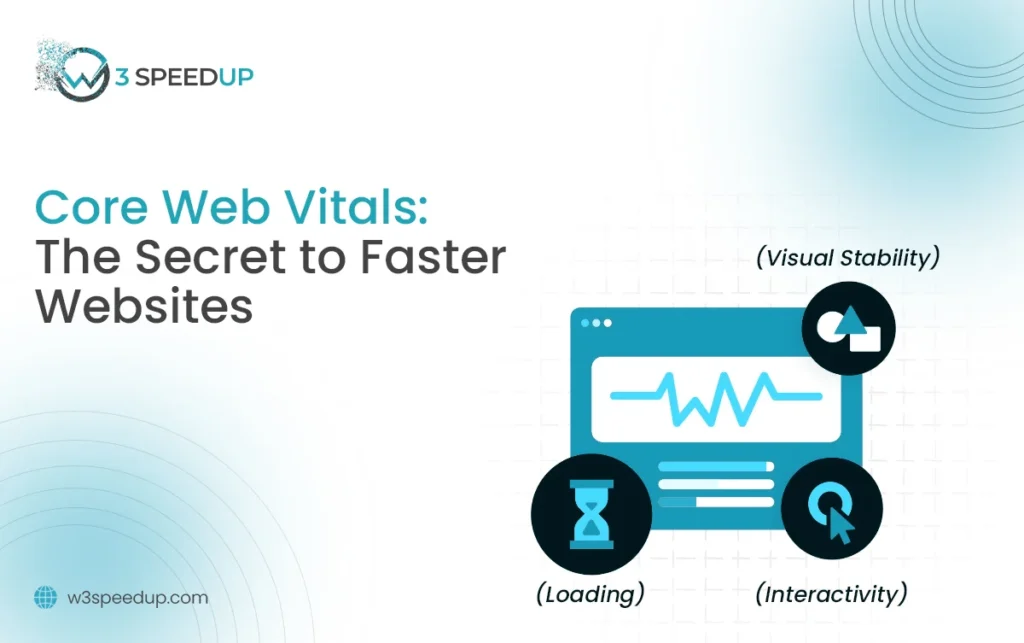Website speed has always been a critical factor for digital success. From the early days of dial-up connections to today’s high-speed mobile internet, users have consistently demanded one thing: a smooth and fast browsing experience. But in 2025, speed is no longer just about how quickly a page loads; it’s about how well a site performs under real-world conditions.
That’s where Core Web Vitals come into play. Introduced by Google in 2020 and refined over the years, Core Web Vitals are now at the heart of website performance, shaping not only user satisfaction but also SEO rankings and business outcomes.
The Evolution of Website Speed: From Load Time to User-Centric Metrics
For years, developers and marketers measured website speed using simple metrics like “page load time” or “time to first byte.” While useful, these measurements didn’t always reflect how users experienced a website, like those that talked about the most expensive player in IPL. For example, a site could technically “load” in three seconds, but if users couldn’t interact with the page or were frustrated by shifting layouts, the experience still felt slow.
Google recognised this gap and introduced Core Web Vitals as a way to measure website performance from a user’s perspective. Instead of focusing purely on technical speed, these metrics capture how quickly users can see content, interact with it, and enjoy a stable layout. By 2025, Core Web Vitals will have matured into the gold standard for measuring web performance. Businesses that prioritise them aren’t just making their sites “faster,” they’re making them better to use. This shift from raw speed to user-centric performance is why Core Web Vitals remain so powerful today.
What Are Core Web Vitals in 2025?
As of 2025, Core Web Vitals consist of three key metrics that define a fast, user-friendly website experience:
- Largest Contentful Paint (LCP): Measures how long it takes for the main content of a page (like images, videos, or text blocks) to become visible. A good LCP score ensures users can quickly see meaningful content without waiting.
- Interaction to Next Paint (INP): Replacing the older First Input Delay (FID), this metric measures how responsive a website feels when users click, scroll, or type. In simple terms, it reflects how “snappy” your site feels.
- Cumulative Layout Shift (CLS): Tracks how much a page layout shifts unexpectedly while loading. Nothing frustrates users more than trying to click a button only for it to move. CLS ensures your site remains visually stable.
These three metrics form the backbone of what makes a website feel fast in 2025. They combine technical precision with user experience, ensuring that sites aren’t just fast on paper but also enjoyable in practice.
Why Core Web Vitals Are the Secret to Faster Websites
1. They Bridge the Gap Between Speed and Experience
Traditional speed metrics told you when a page loaded. Core Web Vitals tell you how a page loads and whether users feel it’s fast enough. By focusing on user-centred benchmarks, websites can eliminate hidden friction points that slow down the experience.
2. They Influence Google Rankings Directly
Google has confirmed Core Web Vitals as part of its ranking algorithm. In 2025, this influence is even stronger. While content quality remains the number one ranking factor, performance signals like LCP, INP, and CLS determine whether a website can truly compete on search results. Sites that ignore these metrics risk losing visibility, no matter how great their content is.
3. They Drive Conversions and Revenue
Studies consistently show that even minor delays reduce conversions. For example, a one-second delay can lower conversion rates by up to 20%. In e-commerce, this could mean millions in lost revenue. Optimising Core Web Vitals not only improves SEO but also ensures a smoother journey for customers, leading directly to higher sales, sign-ups, or engagement.
How to Optimise Core Web Vitals in 2025
While Core Web Vitals may sound highly technical, businesses don’t need to be overwhelmed. The key is adopting strategies that improve real-world performance. Some best practices include:
- Optimising Images and Videos: Use next-gen formats like WebP or AVIF, implement responsive sizing, and use lazy loading to reduce delays.
- Enhancing Server Response: A fast server or content delivery network (CDN) ensures lower latency and quicker rendering.
- Minimising JavaScript and CSS Bloat: Overloaded scripts can slow responsiveness. Streamlining them improves INP significantly.
- Stabilising Layouts: Setting fixed dimensions for media elements ensures layouts don’t shift unexpectedly during load.
- Leveraging Browser Caching and Preloading: Anticipating user actions can reduce wait times and keep interactions smooth.
Conclusion
In 2025, Core Web Vitals will no longer be optional; they are the secret to building faster, more user-friendly websites. They go beyond raw load time, focusing instead on how quickly users see, interact with, and trust digital experiences. By mastering metrics like LCP, INP, and CLS, businesses can enhance SEO rankings, boost conversions, and future-proof their online presence.



